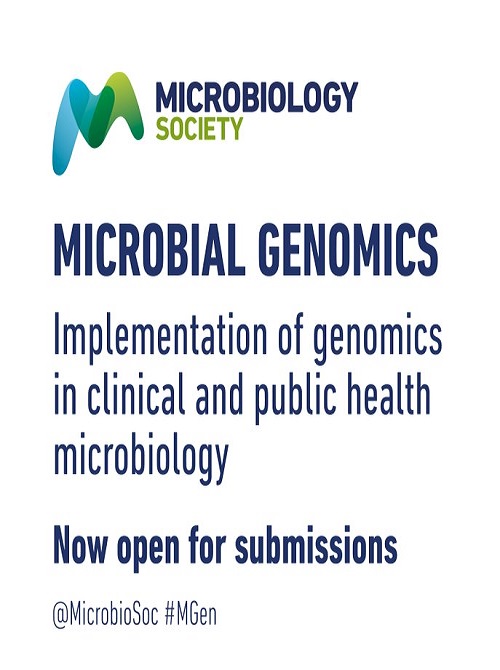比较基因组学方法揭示了摩洛哥热带利什曼病的地方遗传特征
IF 4
2区 生物学
Q1 GENETICS & HEREDITY
引用次数: 0
摘要
在摩洛哥,由热带利什曼原虫(L. tropica)引起的皮肤利什曼病(CL)是一个重要的健康问题。尽管摩洛哥的皮肤利什曼病发病率很高,但人们对这些寄生虫基因组异质性的了解仍然不够。在这项研究中,我们对从确诊的CL病例中收集到的14个摩洛哥分离的L. tropica进行了基因组测序,以研究它们的基因组异质性。通过应用最近建立的基因组不稳定性管道(GIP)进行比较基因组学分析,我们得以进行系统发生学和主成分分析(PCA),并在核型、基因拷贝数、单核苷酸多态性(SNPs)和小插入/缺失(INDELs)变异水平上评估基因组变异。读取深度分析显示,除了第 31 号染色体的稳定四体外,大部分核型都是双体的。相比之下,我们在所有分离株中都发现了重要的基因拷贝数变异,这些变异会影响已知的毒力基因,因此很可能是在野外筛选出来的。对 14 个分离株进行的基于 SNP 的聚类分析显示,由 12 个菌株组成的核心群形成了一个紧密的聚类,共享 45.1 % (87 751) 个 SNP,还有两个菌株(M3015、Ltr_16)相互独立并与核心群聚类,这表明摩洛哥存在基因高度多样化的菌株。系统发育分析将我们的 14 株 L. tropica 分离物与来自不同地区的 40 个已发表的 L. tropica 基因组进行了比较,证实了摩洛哥分离物与所有其他受检分离物的基因差异。总之,我们的研究结果表明,SNP 图谱的潜在区域差异可能会将摩洛哥的 L. tropica 与中东地区流行国家的其他 L. tropica 株系区分开来。我们的报告为今后使用更多菌株进行研究铺平了道路,这些菌株可将不同的表型(抗药性、毒力)和起源(地理位置、宿主种类、分离年份)与明确的基因组信号(如基因拷贝数变异或 SNP 图谱)相关联,这些信号可能代表有趣的候选生物标记物。本文章由计算机程序翻译,如有差异,请以英文原文为准。
A comparative genomics approach reveals a local genetic signature of Leishmania tropica in Morocco
In Morocco, cutaneous leishmaniasis (CL) caused by Leishmania (L.) tropica is an important health problem. Despite the high incidence of CL in the country, the genomic heterogeneity of these parasites is still incompletely understood. In this study, we sequenced the genomes of 14 Moroccan isolates of L. tropica collected from confirmed cases of CL to investigate their genomic heterogeneity. Comparative genomics analyses were conducted by applying the recently established Genome Instability Pipeline (GIP), which allowed us to conduct phylogenomic and principal components analyses (PCA), and to assess genomic variations at the levels of the karyotype, gene copy number, single nucleotide polymorphisms (SNPs) and small insertions/deletions (INDELs) variants. Read-depth analyses revealed a mostly disomic karyotype, with the exception of the stable tetrasomy of chromosome 31. In contrast, we identified important gene copy number variations across all isolates, which affect known virulence genes and thus were probably selected in the field. SNP-based cluster analysis of the 14 isolates revealed a core group of 12 strains that formed a tight cluster and shared 45.1 % (87 751) of SNPs, as well as two strains (M3015, Ltr_16) that clustered separately from each other and the core group, suggesting the circulation of genetically highly diverse strains in Morocco. Phylogenetic analysis, which compared our 14 L. tropica isolates against 40 published genomes of L. tropica from a diverse array of locations, confirmed the genetic difference of our Moroccan isolates from all other isolates examined. In conclusion, our results indicate potential regional variations in SNP profiles that may differentiate Moroccan L. tropica from other L. tropica strains circulating in endemic countries in the Middle East. Our report paves the way for future research with a larger number of strains that will allow correlation of diverse phenotypes (resistance to treatments, virulence) and origins (geography, host species, year of isolation) to defined genomic signals such as gene copy number variations or SNP profiles that may represent interesting biomarker candidates
求助全文
通过发布文献求助,成功后即可免费获取论文全文。
去求助
来源期刊

Microbial Genomics
Medicine-Epidemiology
CiteScore
6.60
自引率
2.60%
发文量
153
审稿时长
12 weeks
期刊介绍:
Microbial Genomics (MGen) is a fully open access, mandatory open data and peer-reviewed journal publishing high-profile original research on archaea, bacteria, microbial eukaryotes and viruses.
 求助内容:
求助内容: 应助结果提醒方式:
应助结果提醒方式:


